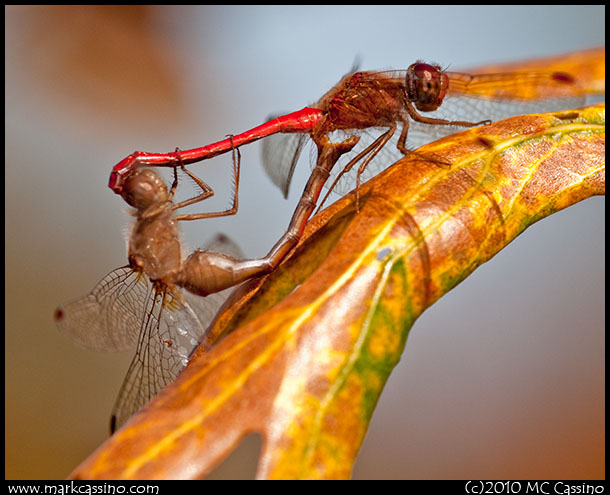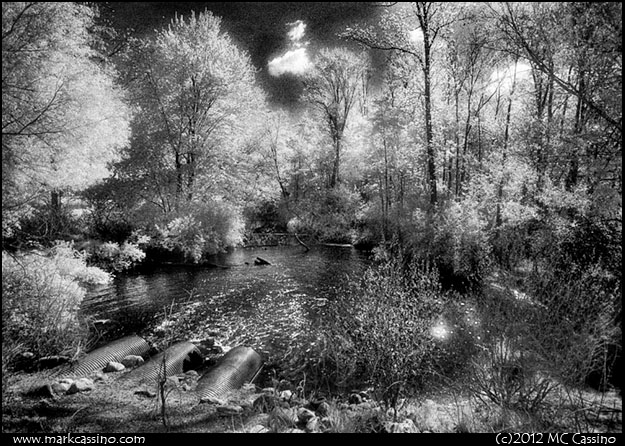Posted by mcc on Mar 12 2012 in Landscape Photography, Midwestern Landscapes, Infrared, Allegan State Game Area, Allegan Forest
Posted by mcc on Jul 10 2011 in Insect Photography, Allegan State Game Area, Allegan Forest, Dragonfly Photography, Odonata Photography, Herpetological Photography
It’s mid July and the long sweet days of summer are upon us. I haven’t had the chance to blog much these last few weeks, but still I carve out a few hours on the weekends to visit the Allegan Forest and mark the passing of the season.
A midsized pond located in a field of 48th street is a frequent destination during these visits. When I first started photographing in this area the pond was just a vernal marsh. In 2006 it even dried up enough that I could walk through it. A mucky spot with a few reeds was the only sign of the water then. Now it is dozens of yards across and full of open water. Many larger trees have their roots submerged, and have finally succumbed to the rising water.
The pond is home to lots of odes (odonates), but also many frogs and toads. Usually, they scatter as I walk along the water’s edge – green frogs in particular cry out “eeeeee!” and then jump out into the water. Below is one green from that was unimpressed by my presence, and let get me get down to eye level with it for a portrait.
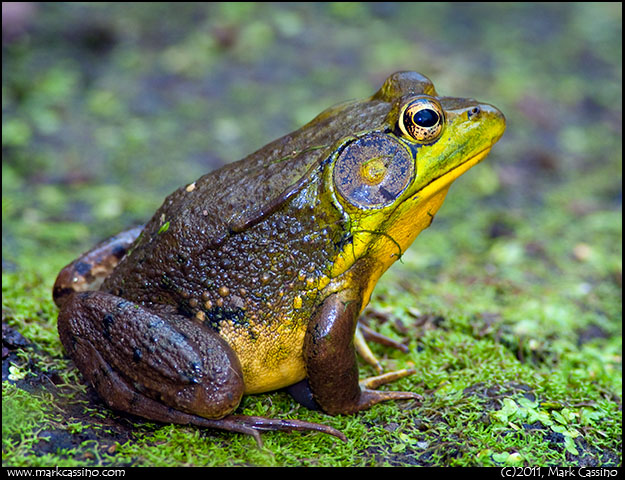
As I mentioned, the pond also hosts a large number of Odonates. Here’s a very large damselfly – these are about two inches long and are very numerous around the pond. I don’t know what kind of damsefly it is, and my field guides don’t show anything this large in Michigan (at least that I can find.)
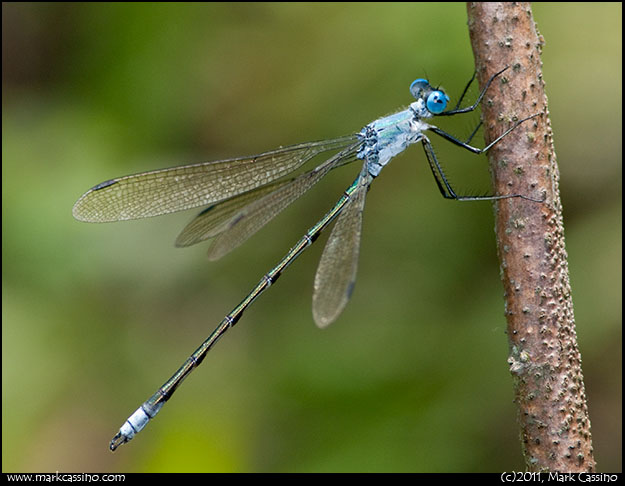
Meadowhawks arrive at the peak of summer. It’s great to see them appear in their crimson glory. So far this year I have not seen any red ones, but it is still early. I have, however, spotted a few of immature meadowhawks – signs that the red dragons are not far off. Here’s a shot from this morning:
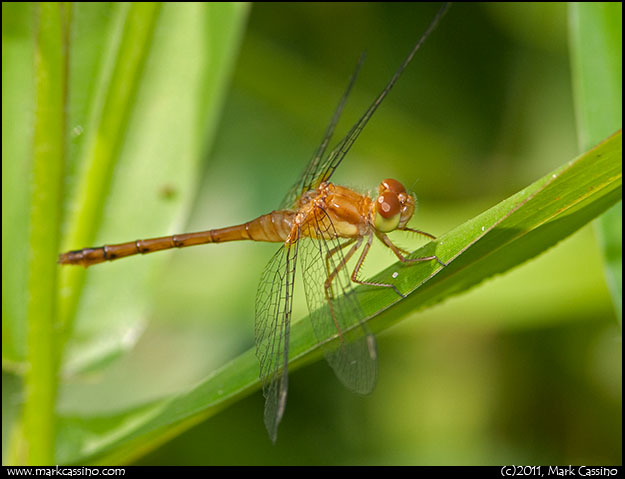
Of course, as the days progress the spring dragons start to waiver. This year’s cold and wet spring meant that many early dragons appeared later than usual and many are lingering longer than usual as well. Of course, some – like the dot tailed whiteface – will be around for several weeks yet. Here are three spring dragons taken on earlier trips in recent weeks. First, Dot Tailed Whiteface:
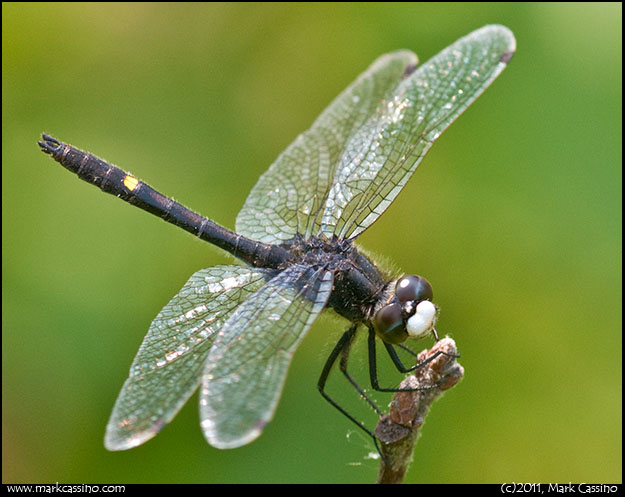
A Calico Pennant:
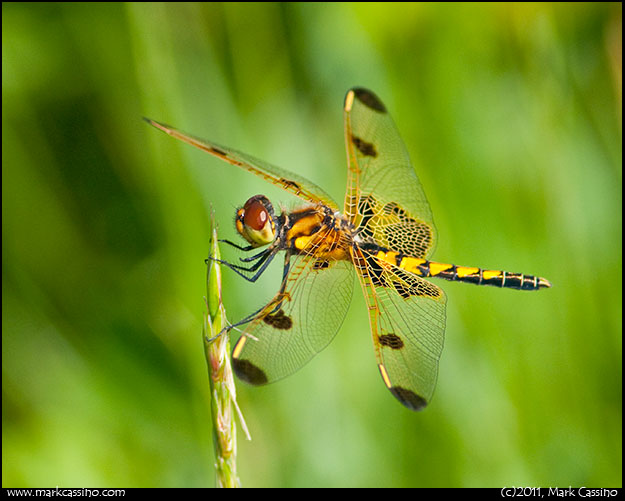
And lastly, a four spotted skimmer:
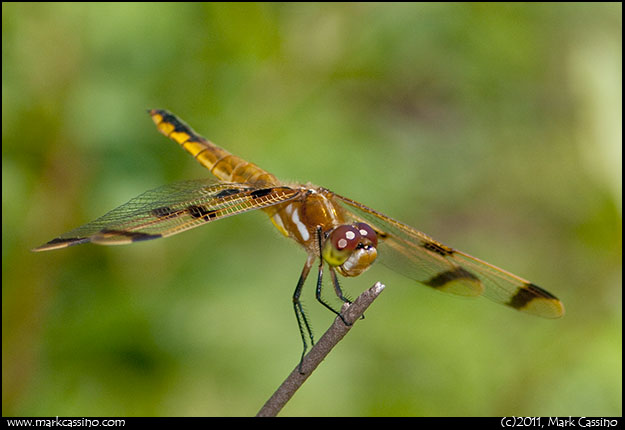
While the water level in the pond remains high, the last few weeks have seen little rain and the field is taking on the burnish of the drier months of summer. I hope to have some summer dragons – brilliant red dragons – in the near future.
Posted by mcc on Jun 22 2011 in Insect Photography, Allegan State Game Area, Allegan Forest, Dragonfly Photography, Odonata Photography, Macro Photography
Last Sunday, June 19th for those who count the days, I went out to the Allegan Forest to look for dragonflies. I headed to the most westerly fields, about 8 miles past the actual town of Allegan. This is the west side of the high banks area.
I pulled up to the usual entry point. This is a popular place for folks to come and target practice, and whoever comes here brings the most interesting targets. Today we had bowling pins, blown to bits. A layer above the plastic WWII soldiers and computers and other stuff that has been brought out to be shot up. The dragonflies don’t care - they just buzz around. Today someone was off shooting in the woods,and the dull ‘thud thud thud’ of shotguns in the background music for anyone hanging out in the area.
Here’s a brown spike tail which is always in this field in the spring.
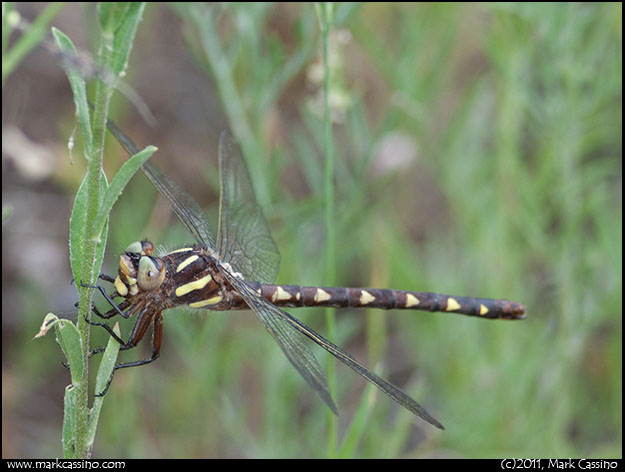
Wandering around a bit, I find the common blue dasher, with the markings of an immature male or female:
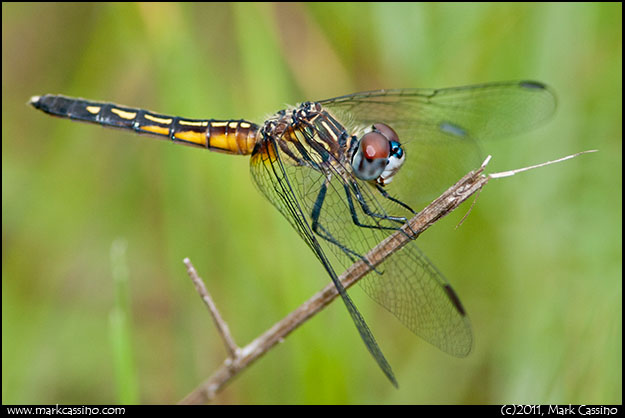
I wandered through the fields. There are a few large areas, mowed every few years and separated by thin bands of trees. A dashing blue eyed darner teased me incessantly, no luck getting that photo.
I wandered for a good half mile through the connected fields, over an hour, without getting a decent shot. On the way back I walked along the wood line and encountered a short but fat hognose snake. It was charming and entertained me with its impressive cobra hood affect and startling loud hiss. I’ve never seen one of these play dead, and it seems cruel to scare them to point where they do so, so I just snapped away until it got tired and settled down, ‘cobra hood’ still intact, looking rather happy in a goofy sort of way…
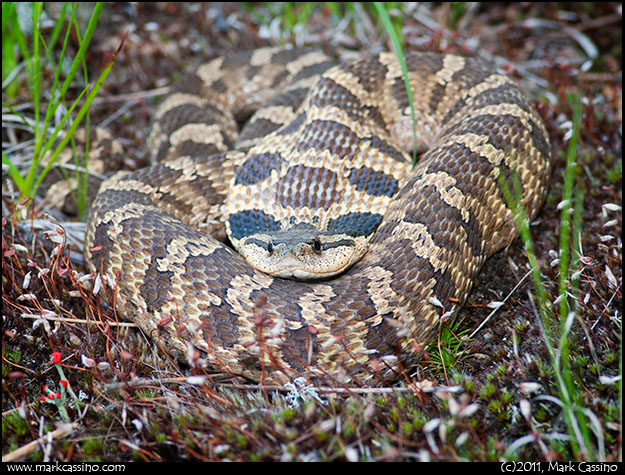
I stumbled back towards my car and ran into this most sedate brown spike tail, which even let me get very close:
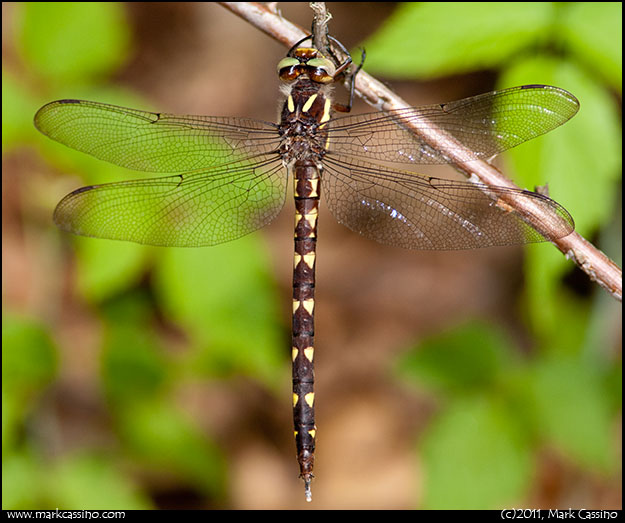
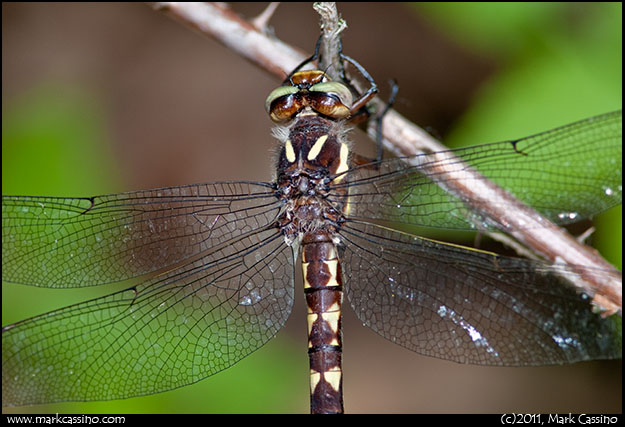
Sitting next to it was this fine blue dasher:
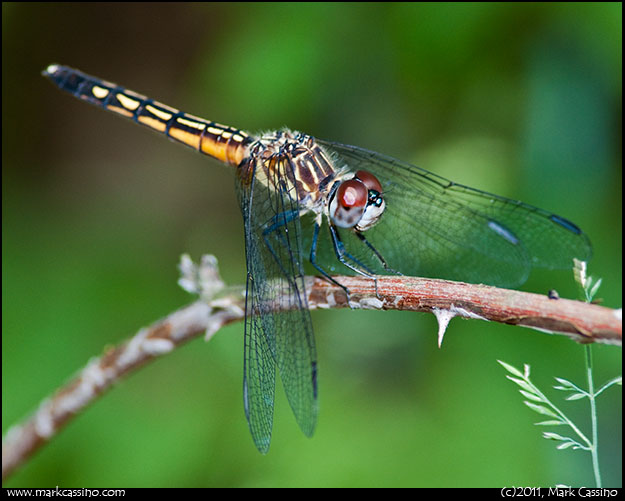
Looking down, I saw another medium sized hog nose snake, this one right under my feet, With it’s cover blown it whipped into the underbrush. I should comment that I was just a few yards from where I ran into the baby hognose photographed in 2009 and noted in this post.
Wandering back towards the river, I ran into several more dragonflies - like this maturing white faced spot tail ("hand’s up, dude!"):
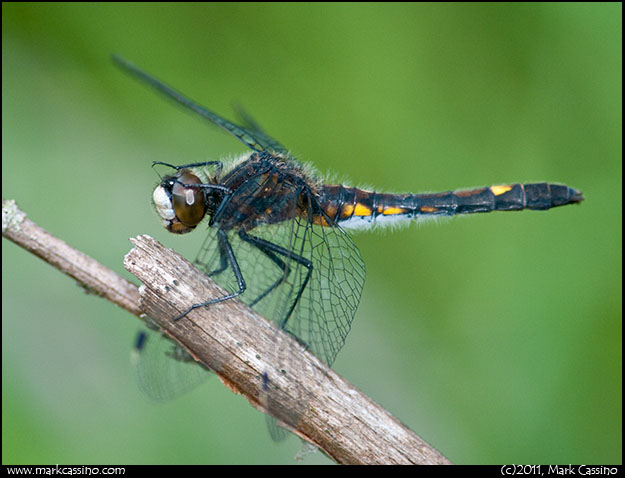
Yet another brown spike tail dragonfly (in most places I visit, it would be rare to see one, let alone three):
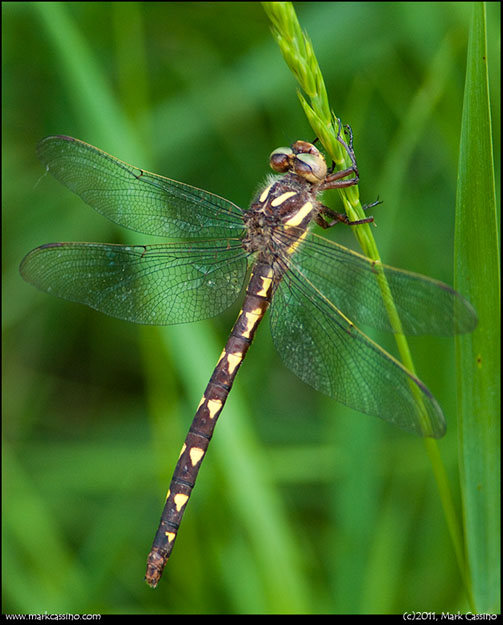
And a tiger swallow tail butterfly (I hope someday find one of these with both ‘tails’ intact):
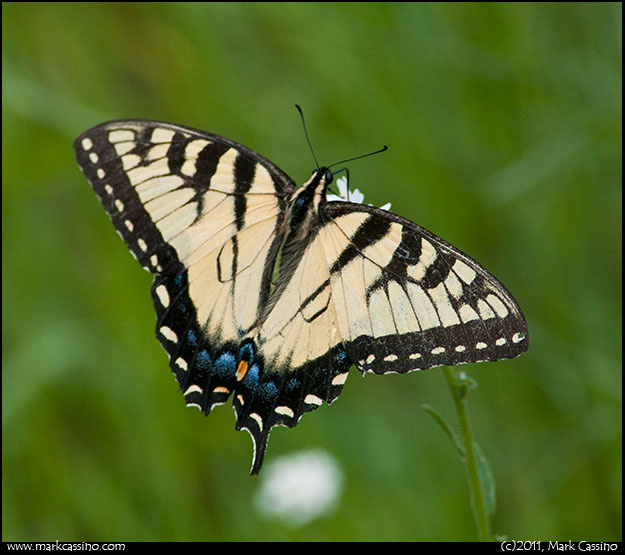
And finally - mature male blue dashers:
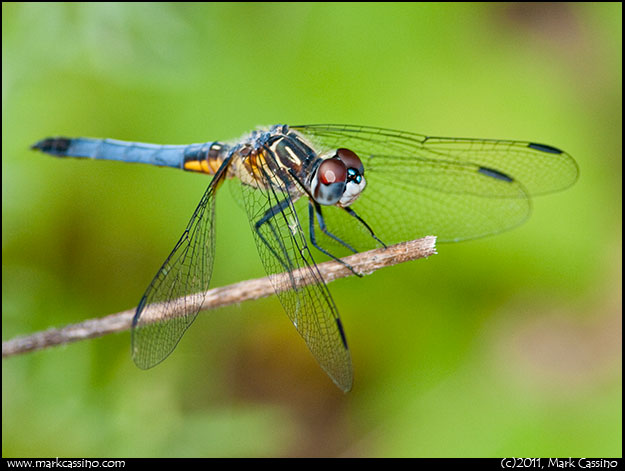
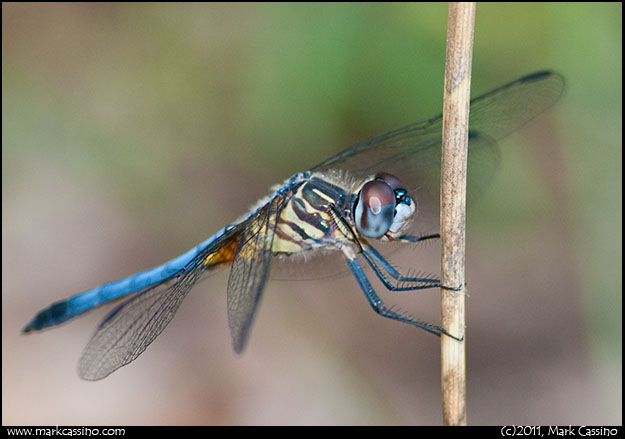
Las summer I was able to get just a couple old battered male blue dashers, very late in the season. Old goats who just would not give up. This year I’m glad to see the young ones, bright in color, strong of wing, early in the season…
And lastly - a female blue dasher:
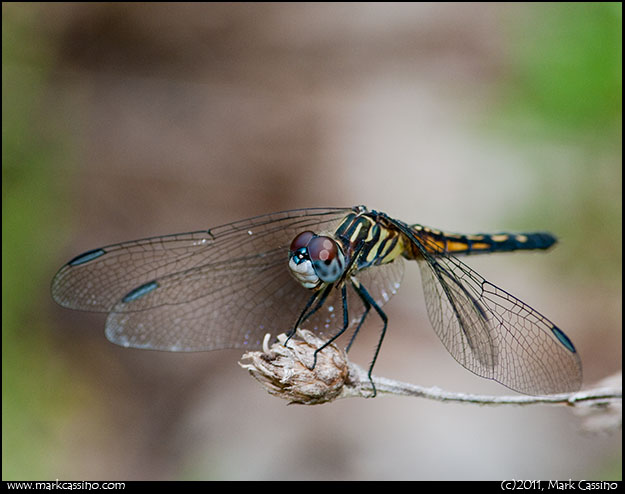
That was it - 3 hours north of the river, my plans to hit some familiar fields to the south were set aside. But it was a good fun trek through the tall grass. All of these shots were taken with the D-FA 10mm lens and 1.7x AF converter, as my 200mm macro lens is still broken.
Soon, I am sure, the red dragons will appear….
Posted by mcc on Jun 13 2011 in Insect Photography, Allegan Forest, Dragonfly Photography, Odonata Photography, Pentax K7
A while back I mentioned the my trusty old A* 200mm macro lens had begun to malfunction. I sent it off to Pentax for repair last week, and hope to hear a positive prognosis. Unfortunately, the lens is old enough that repairing it may be impossible, if parts are not available. So that leaves me to find an alternative. Buying another lens is not an option – no similar lens is currently made for Pentax at this time. The Sigma 150mm lens may be coming in the future, but for now is only promised… Well, the obvious alternative would be to use a 100mm macro lens plus a teleconverter, to simulate a true 200mm lens. SO earlier this week I tried just that – the Pentax SMC DFA 100mm f2.8 macro combined with a Kiron MC7 Teleconverter. It’s the only standard 2x converter I have on hand, and in my experience has been pretty good in terms of quality. However – there is never any guarantee that any teleconverter will work well with a particular lens. Sometimes a lens and teleconverter compliment each other, sometimes they don’t… So – affixed to the 2x teleconverter the 100mm macro lens functions as a 200mm f5.6 macro. One nice bonus is that with the teleconverter the lens now focuses to 2x life sized. I had forgotten how much fun it is to get such high magnification – but, when I went out to the garden to experiment it all came back to me. Here’s a shot of a couple of mating Syrphid flies:
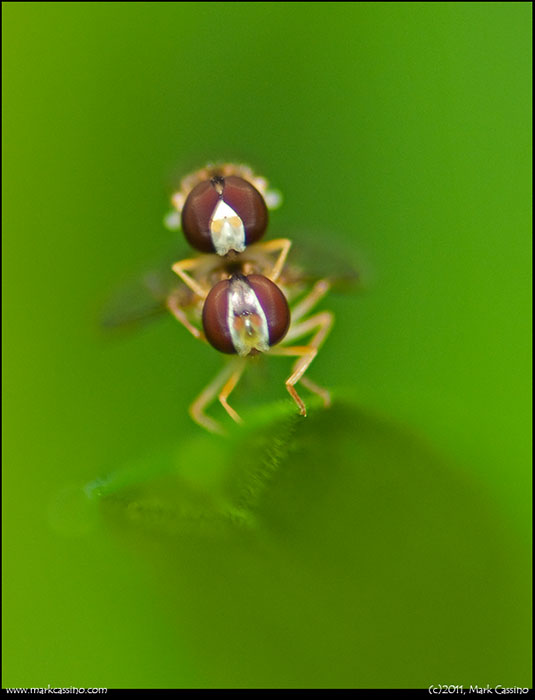
Here’s an actual pixel crop of their cute little faces – note the sexual dimorphism in the shape of their eyes. Also note the lacking acutance (sharp edges) in the image, largely due to the chromatic aberrations (color fringes). While this combo produces some decent resolution in images, the sharpness is lacking.
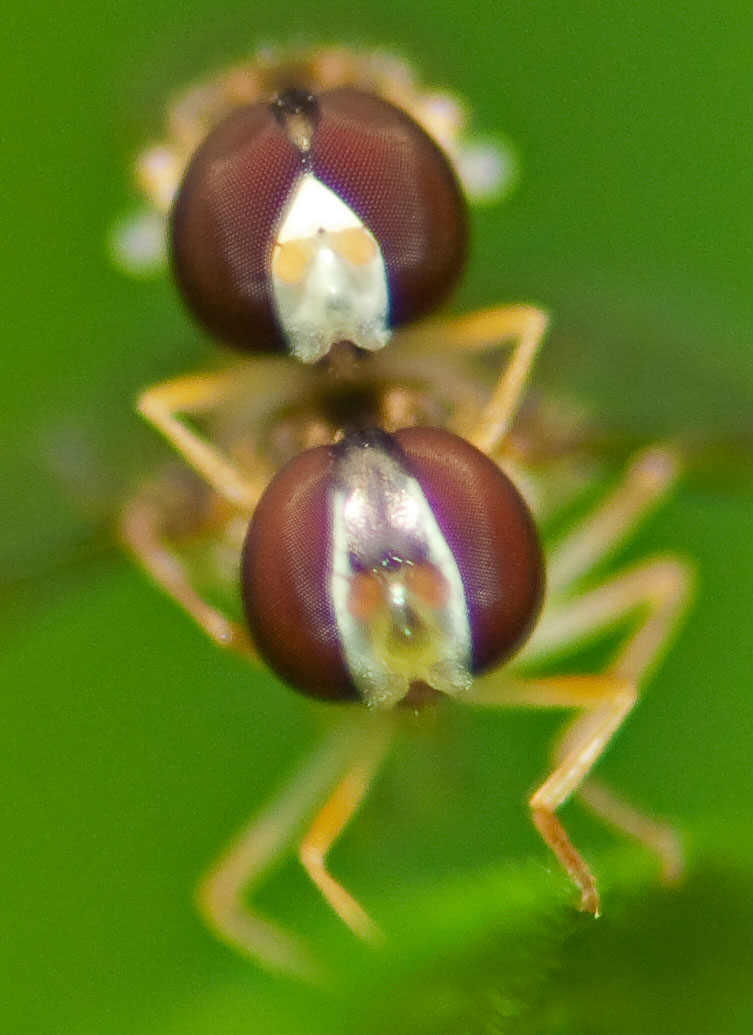
Another shot of the flies, along with another actual pixel shot:
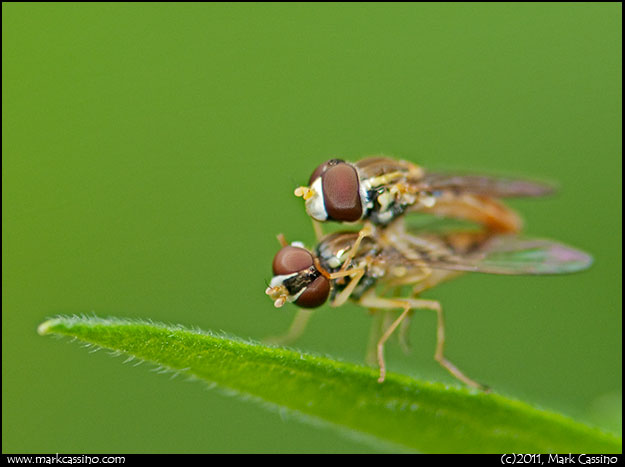
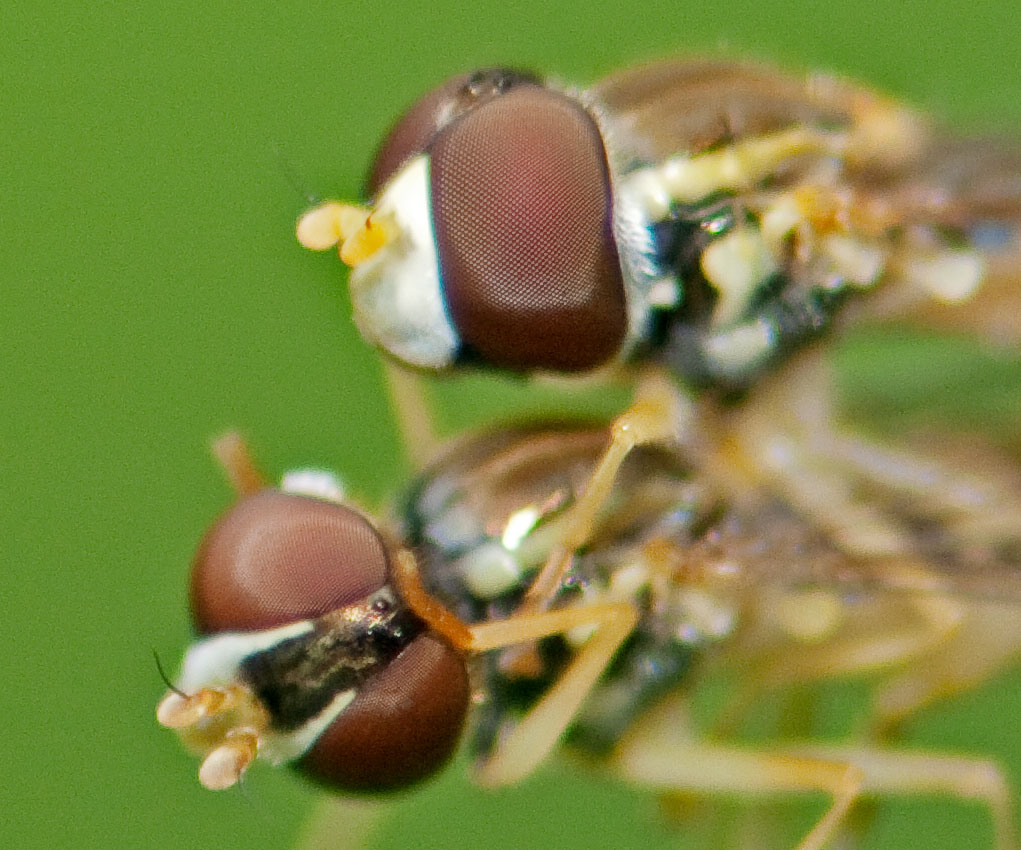
Well… I took those shots on a gloomy afternoon and at a relatively slow shutter speed. They also were pretty high magnification – those little flies are only about 1/4th of an inch in length (~3 mm) and I was shooting well over 1x life-sized. I wondered if larger insects, better light, and lower magnification would produce better results… So I went off to the Allegan Forest, to try again. It was cool and cloudy, but a little sun peaked through the clouds now and then. I found a sluggish four spotted skimmer and set it on a oak spring. It proved to be a very willing subject for a while – at least till it warmed up and flew off. Here’s the best shot I got of the Four Spotted Skimmer, plus an actual pixel shot of its eyes:
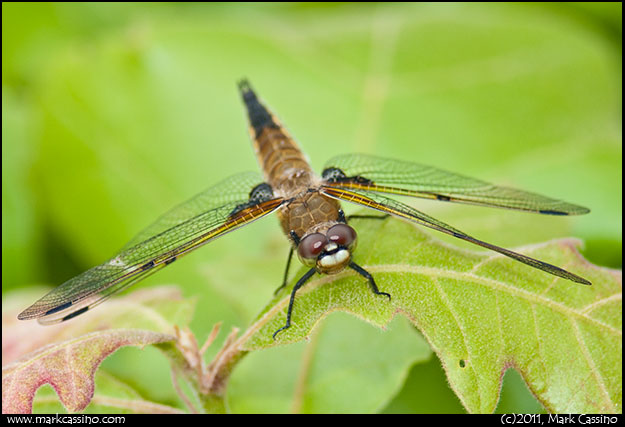
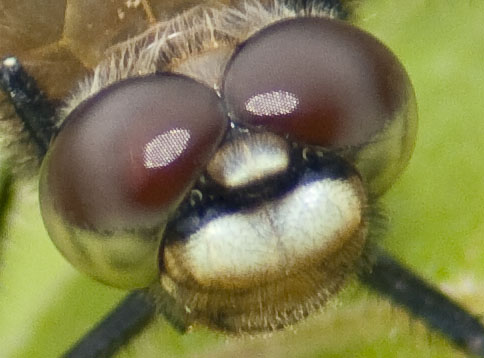
OK – not bad, better lighting obviously helps, but not great. The lack of acutance is confirmed. I moved on to another location an another alternative – the D-FA 100mm lens with the Pentax 1.7x autofocus adapter… The 1.7x autofocus adapter is a curious beast. It is a 1.7x teleconverter, but links to the camera’s autofocus system. The camera can move the elements of the converter around enough to allow for some modest autofocus functionality. For my purposes, I don’t care about autofocus and I just turned it off. I then wandered into a familiar field and down to a small pond, looking for dragonflies. Dot Tailed Whitefaces, Belted Whitefaces, and Frosted Whitefaces were all out in extreme abundance. After a while, I found this Dot Tail sitting on a sandy slope. The insect was pawing at the sand, I’m not sure why, and seemed quite unconcerned about me. So here’s a shot and the actual pixels:
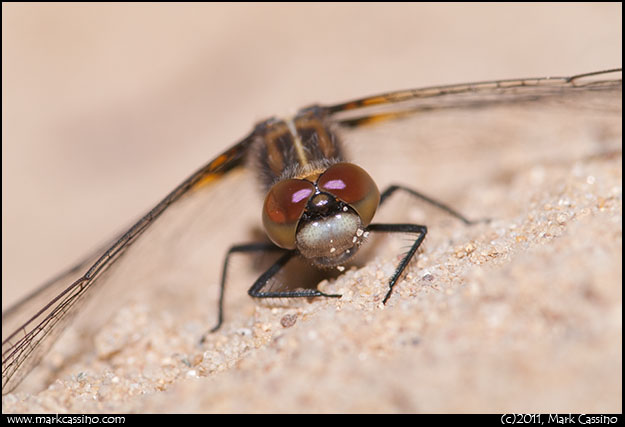
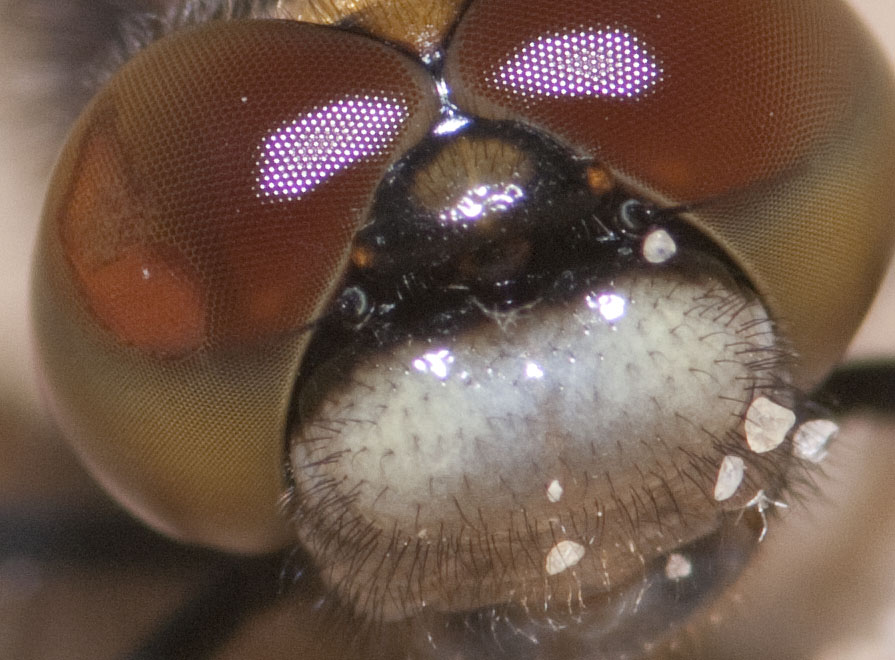
Now… that’s what I’m talking about. The level of detail in the actual pixel shot is quite acceptable, possibly even rivaling the 200mm macro lens. You can see that the dragon’s right eye is damaged, and maybe that explains its distraction. This shot was taken at a little more than 1:1 life-sized, but I am very happy with the acutance, detail, and clarity. Here’s another shot – not an odonate, but a Bee Hunter. Again – greater than 1x life-sized, and pretty good detail and clarity:
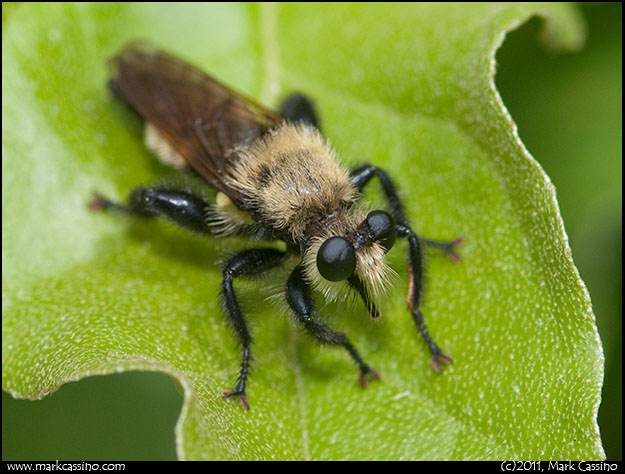
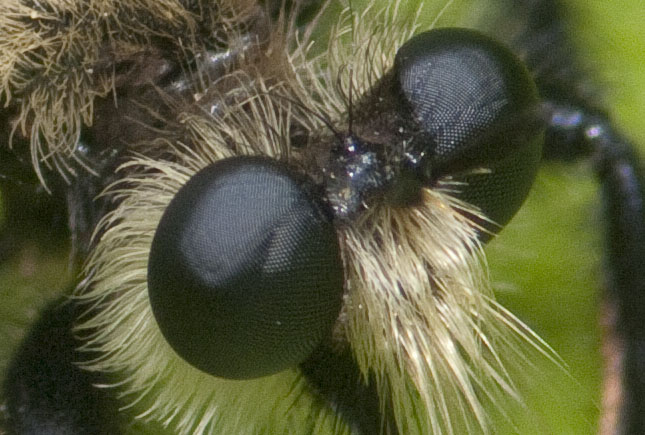
Well, I guess I have my alternative, and while I hope that the 200mm macro lens is repairable and comes back soon, if it doesn’t, that’s OK too…
Posted by mcc on Jun 07 2011 in Insect Photography, Allegan State Game Area, Allegan Forest, Dragonfly Photography, Odonata Photography, Macro Photography, Pentax K7
About a week ago I ventured out to the Pierce Creek Institute, partially to drop off a couple of prints that will be in an art exhibit celebrating their 10th anniversary, and partially just to hang out and get some dragonfly photos. Here are a few photos from that trip.
After weeks of cold, wet weather, things were finally sunny and getting hot. There were lots of large puddles and flooded areas, and the wetlands around the Institute were buzzing with dragonflies. As I drove down Cloverdale Road, the dragonflies filled the air, their bronze wings catching flashes of light as the buzzed around.
A few photos - first - the most prevalent early spring dragonfly around here, the White Faced Dot Tail:
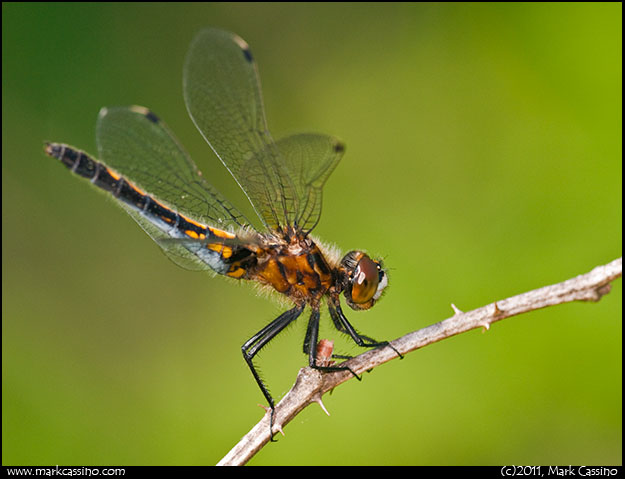
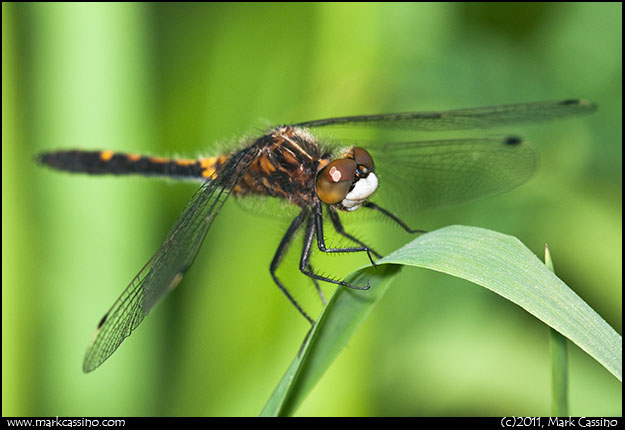
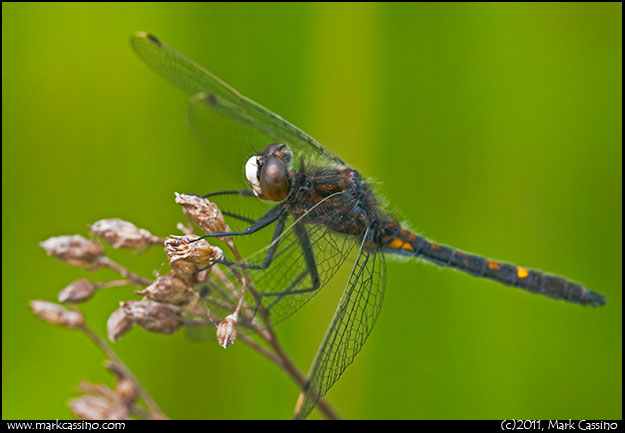
And here are a couple of immature Common White Tails:
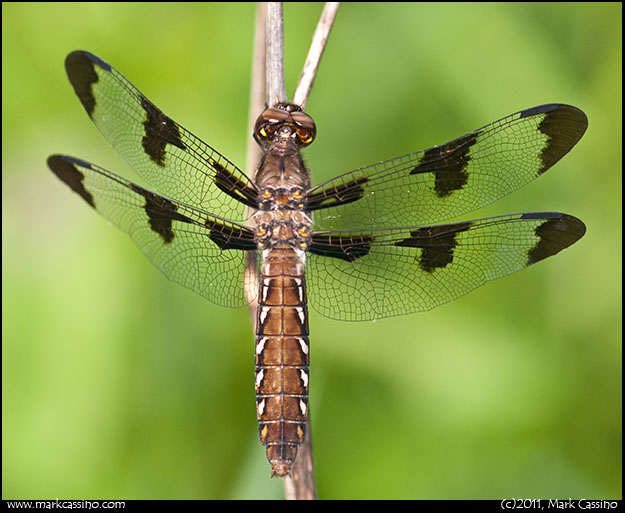
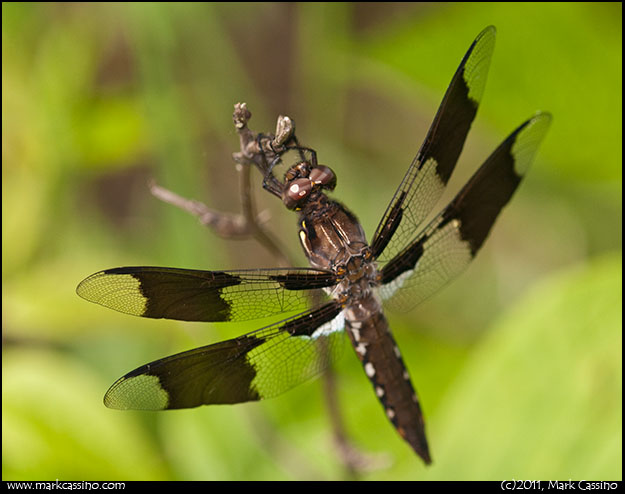
I’ll have a few more photos from that trip and last weekend’s trip to post yet. Unfortunately, my precious Pentax SMC A ’star’ 200mm macro lens began to malfunction in the field last weekend. Well, after 12 years of devoted service, and hundreds of thousands of photos, I can’t complain. But it is off to Pentax to hopefully be repaired. I may take that as a cue to step back from dragonflies and find some other way to pass the time, at over the next couple of months while the lens is repaired.
Posted by mcc on Apr 29 2011 in Landscape Photography, Midwestern Landscapes, Allegan State Game Area, Allegan Forest, Pentax 6x7
Just a quick snap shot from the Allegan Forest - a peek at the wildlife refuge, taken from the gate leading near Swan Creek. A while back I added a lensbaby muse to my small slection of Pentax 6x7 lenses - some fun, that lens. Agfa APX 100 in Agfa Rodinal 1:50
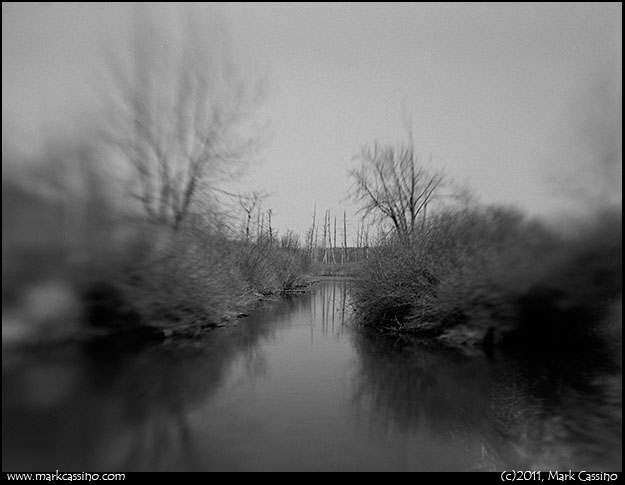
Posted by mcc on Oct 25 2010 in Announcements, Insect Photography, Michigan, Allegan State Game Area, Allegan Forest, Dragonfly Photography, Odonata Photography
Well, here we are in late October. I’ve had little time to visit the fields, but fall is well under way and things are going to brown. Here’s a little essay from this July that never made it onto this blog:
There is an interesting place in the Allegan Forest. It is off 44th street, a ways south of 115th avenue. When you drive by on the dirt road you can catch a glimpse of a small parking lot at the end of a little drive, carved out of the forest. If you look closely as you pull in you’ll see a small log wedged in the branches of a pine tree near the entrance, with a moldering orange ball the size of a softball, or a grape fruit, fixed to it.
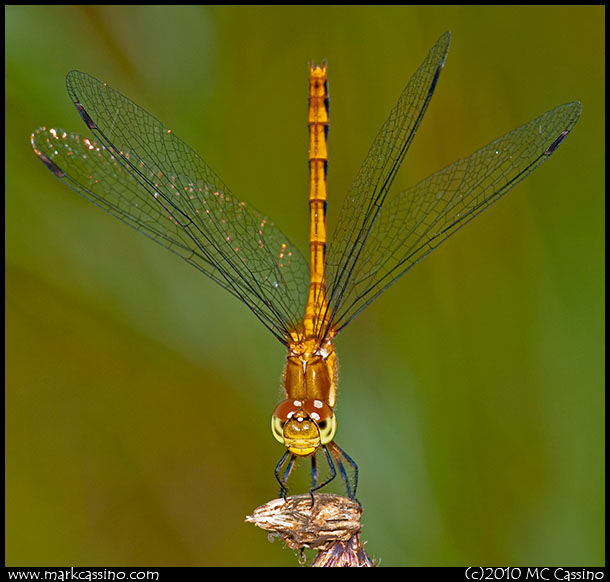
The parking lot is maybe big enough to accommodate 10 vehicles. It is dry gravel with the scrubby woods pressed close in on the north and the south. Someone dumped a bunch of garbage there, so plastic bottles, cans, scraps of tin foil and shreds of plastic bags adore the edge of the forest. If you look down and it is summer, you will see ants on the gravel. Lots of ants.
There is a small red gate, the kind typically installed by the DNR to close off two tracks and service roads. Behind the gate is a long disused two track, just two parallel bands of gravel with weeds in the center strip growing up 6 feet or more. Near the gate is an old cast iron pipe with a slot cut in the side. Similar pipes are used to this day at state parks and campgrounds - you drop your self-registration paperwork and fees into them.
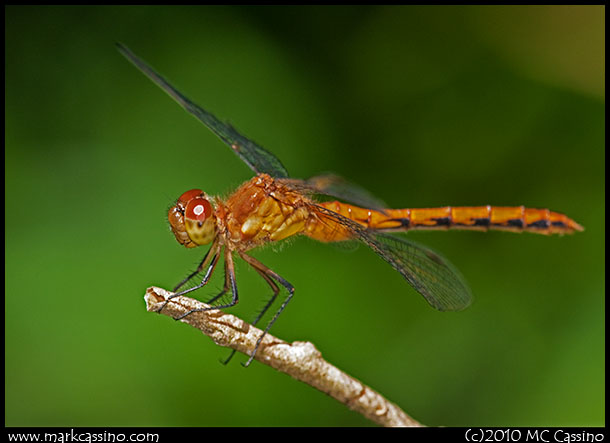
The abandoned two track runs straight as an arrow into the woods. The trees have been cleared 20 or 30 feet to either side, though here and there a midsized tree has taken hold and is growing right beside the road.
The cleared areas along the side of the road are knee high with grass, knapweed, poison ivy, patches of milkweed and other plants. Huge anthills – domes 8 or 10 feet in diameter – rise up out of the grass. No plants grow on these nests, instead they are perforated with dozens of holes and millions of ants scurry in and out of them. The road extends for over 300 years, and the ant hills rise up every few feet for that entire distance. I imagine it is a huge single colony of ants – but maybe it is a federation of separate ant states. Either way, it pays to walk gingerly and not to stand around idle. Even on the road or the parking lot, you will get the stray ant tickling its way up you leg until it realizes it is stuck, and then the pinprick of its bite.
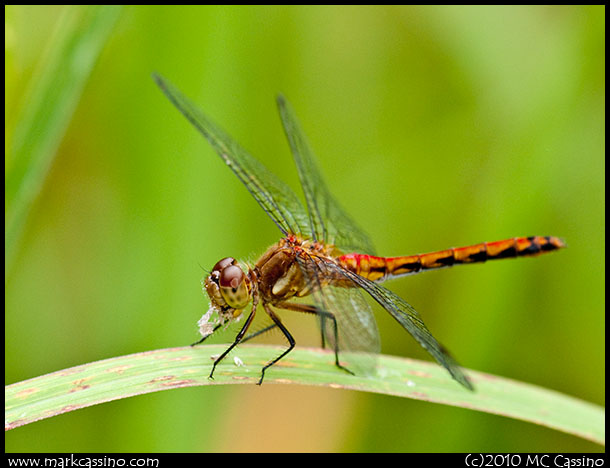
Thankfully, the ants here in Michigan are all pretty mild. Though it’s not a good idea to walk on the ant mounds and it is a very bad idea to jab a monopod into the soft sand of the ant domes. Take it from me.
Where the two track ends there is a break into a large field on one side. It is open and green and lush this time of year. Visiting it on Saturday, a white tail leapt out of the brush and bounded away gracefully. A moment later two young deer – still with their spotted coats but almost the size of a full-grown adult – bounded off in the other direction.
A couple of small concrete slabs are carved out of the vegetation – foundations form some now long gone buildings – and in a copse of scruffy trees a large sewer pipe stands on end – at least 6 feet in diameter and towering 20 feet or more into the air. I once spoke with a hunter here who referenced “the silo” – but it is a sewer pipe. How it got in this place and on its end is anyone’s guess. Someone – no doubt mystified by its presence here – chipped a hole in the side of it. Too small for a person to get through, you could peer into the inky darkness inside the pipe, if you wanted to.
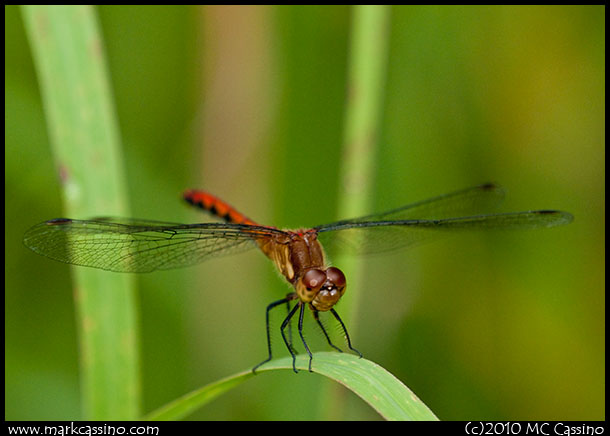
If you keep going along the path that continues from the two track you’ll go 30 or 40 feet with large trees pressing in on either side, and then come upon a huge field, a few hundred yards long and wide. It is a regular square, carved out of the forest, and this time of year is full of knapweed, prairie grass, and lots of wild strawberries – acres of wild strawberries.
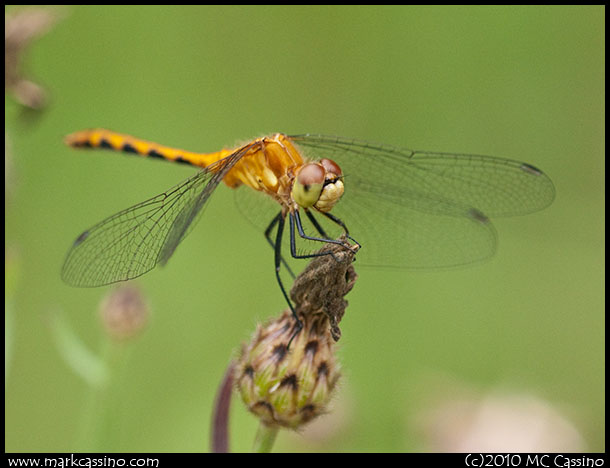
And all along the way there are dragonflies – lots of dragonflies – and their images are recorded here in this post.
Posted by mcc on Oct 12 2010 in Insect Photography, Allegan State Game Area, Allegan Forest, Dragonfly Photography, Odonata Photography, Macro Photography
Autumn has come upon southwest Michigan like the mist in the morning. In some places it is thick and defines the scene, in others it is barely present and easy to ignore. If you wanted to pretend it is still summer, you could turn your back on the bright red maple and look down a narrow row of trees and see only green.
More subtle signs are more telling. The insects that fly in the fields are like tick marks on the face of a clock, always pointing towards the true time of the season. And of course, I see nothing but Autumn Meadowhawks, and the occasional Buckeye Butterfly.
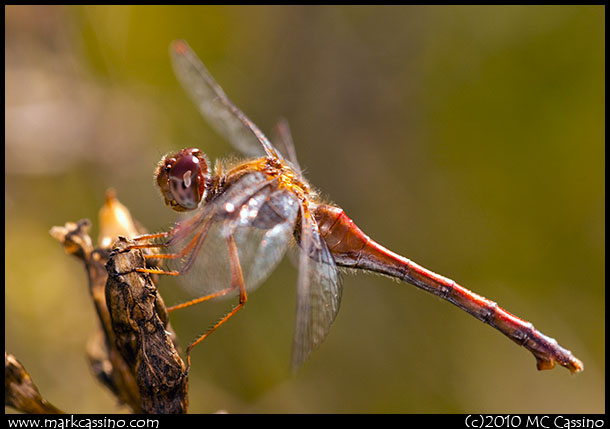
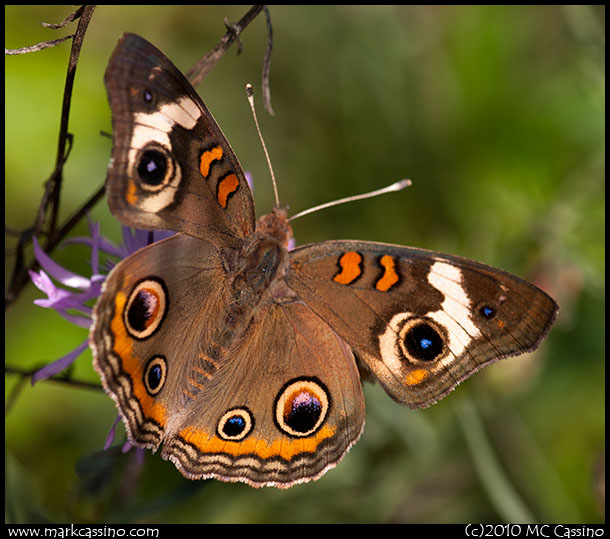
I visited the old farmstead to see what had become of this field. The logging has stopped and the huge piles of trees have been cleared out. The little parking area that had been rutted by the constant flow of semi-trucks, coming and going to get the logs, was graded and planed to be almost smooth. I stopped and wandered down to the pond. The field was recently mown so there was no tall grass for the dragons to perch upon. But many joined pairs of Autumn Meadowhawks filled the air over the water. More numerous were they than the single dragons, or so it seemed.
